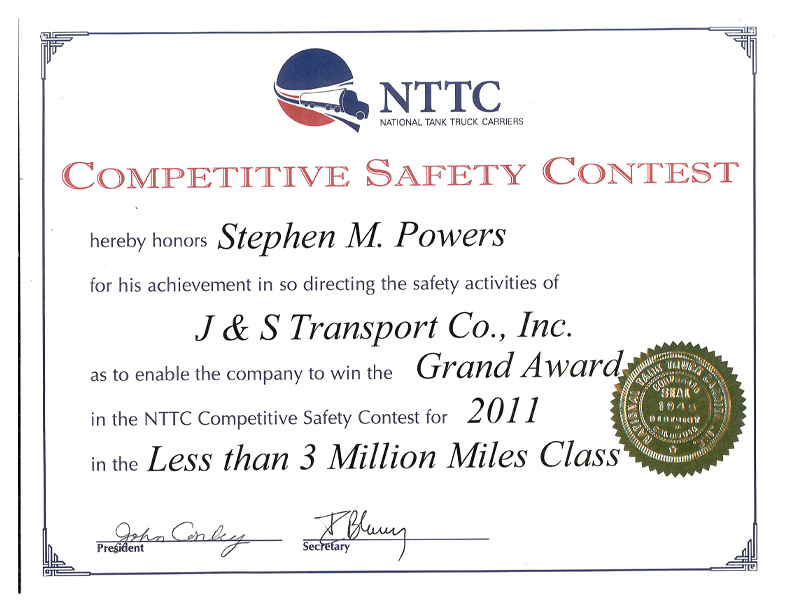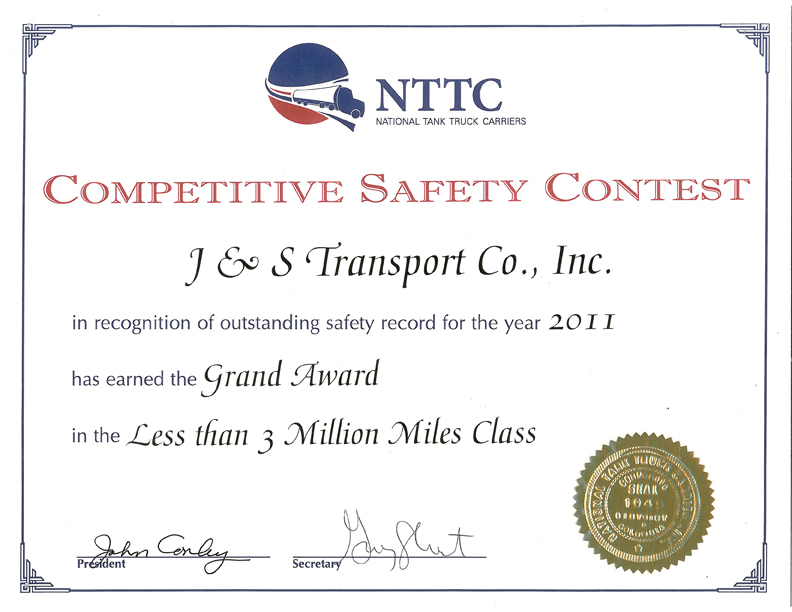Driver Letter: Railroad Grade Crossings
Dear Professional Driver,
This month’s driver letter is to review the regulations for a placarded commercial motor vehicle approaching railroad grade crossings. How many times have you watched the evening news or read the newspaper regarding a commercial motor vehicle colliding with a train while crossing the railroad grade. Why a professional driver would attempt to “blow thru” a railroad grade crossing is beyond reason and also a violation of the FMCSA Safety Regulations.
Part 392.10 of the Safety Regulations require the placarded commercial motor vehicle stop that vehicle within 50 feet of and no closer than 15 feet to the tracks, listen and look in both directions for an approaching train. When absolutely safe to do so; drive through the crossing. The vehicle must complete the crossing in a gear which will allow the driver not to shift gears. Why? It is to prevent the vehicle from stalling in the crossing.
The Federal Motor Carrier Safety Administration identifies circumstances when the vehicle need not stop. A streetcar (tram) crossing, or railroad tracks used exclusively for industrial switching purposes within a business district; a railroad grade crossing where authorized personnel directs traffic to proceed, a railroad grade crossing controlled by a functioning highway traffic signal transmitting system which, under local law, permits the vehicle to proceed across the railroad tracks without stopping; an abandoned railroad crossing marked with a sign indicating that the rail line is abandoned; and an industrial or spur line grade crossing marked with a sign reading “Exempt” which has been posted with the consent of State or local authority.
Even if the circumstances are such the vehicle does not need to stop, the vehicle still must slow down. The FMCSA Regulations (Part 392.11) states “every commercial motor vehicle…upon approaching a railroad grade crossing, be driven at a rate of speed which will permit said commercial motor vehicle to be stopped before reaching the nearest rail of such crossing and shall not be driven upon or over such crossing until due caution has been taken to ascertain that the course is clear.”
The Norfolk Southern Corporation states the typical train is 7,000 feet long weighing in at 3,200 tons. It takes that train a full mile (equivalent to 18 football fields) to stop; even after hitting something. It does not take a rocket scientist to understand this physics equation: Mass (train tonnage) X Velocity (train speed) = Momentum (magnitude of the impact) when said train strikes the commercial motor vehicle not complying with the Regulations. Why any professional driver would risk “beating the train” at a railroad crossing is incomprehensible. This behavior risks death and injury, not only to themselves but innocent people as well.
When you approach a railroad crossing and see a white cross-buck sign, do you know the full meaning of it? Besides warning you that it’s a railroad crossing; it also means to slow down, look and listen. Adhering to that sign can be beneficial to everyone’s health.
To emphasize the need for this regulation, type the following URL onto your browser to observe the driving behavior of unprofessional commercial motor vehicle drivers. There is no gore with the videos.
http://www.youtube.com/watch?v=zQHLthLLZXo
Be Safe!!
Steve


